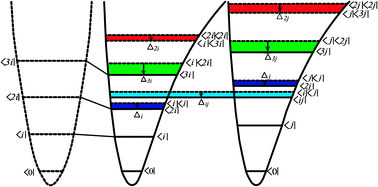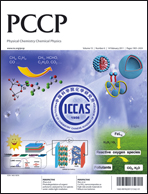In this paper, the application of the vibrational self-consistent field (VSCF) and correction-corrected VSCF methods for calculating anharmonic parameters, including transition frequency, transition intensity and dipole, and vibrational anharmonicity of 3N − 6 normal modes for formamide, glycine, N-methylacetamide and their deuterated derivatives are explored mainly at the level of density functional theory. The computed fundamental anharmonic frequencies are found to be in reasonable agreement with experimental results. Diagonal anharmonicities of the second overtone states were examined for multiple normal modes, whose magnitudes were found to correlate well with those of the first overtone states in the three small molecules. The results show that the VSCF-based approach can be utilized to predict anharmonic parameters of higher vibrational states that are essential to understanding multi-pulse infrared nonlinear experiments of peptides.
You have access to this article
 Please wait while we load your content...
Something went wrong. Try again?
Please wait while we load your content...
Something went wrong. Try again?


 Please wait while we load your content...
Please wait while we load your content...